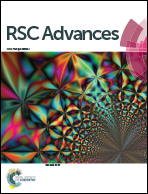Silicate anion intercalated cobalt-aluminium hydrotalcite (CoAl-HT-Si): a potential catalyst for alcohol oxidation†
Abstract
Silicate intercalated CoAl hydrotalcite materials were synthesized (CoAl-HT-Si) and systematically characterized. The intercalated hydrotalcite materials lead to the formation of solid solutions of cobalt silicate and cobalt spinel structures, which have higher surface area and pore volume than pure CoAl-HT. The XPS studies revealed the presence of cobalt in divalent and trivalent oxidation states on the surface. The resultant materials were found to be promising catalysts for oxidation of various alcohols.


 Please wait while we load your content...
Please wait while we load your content...